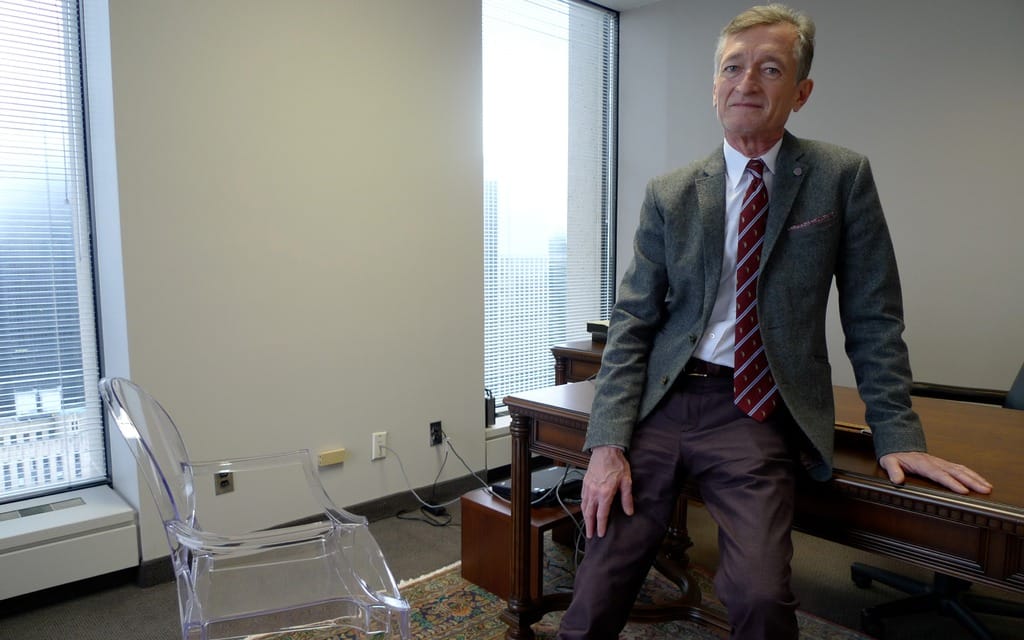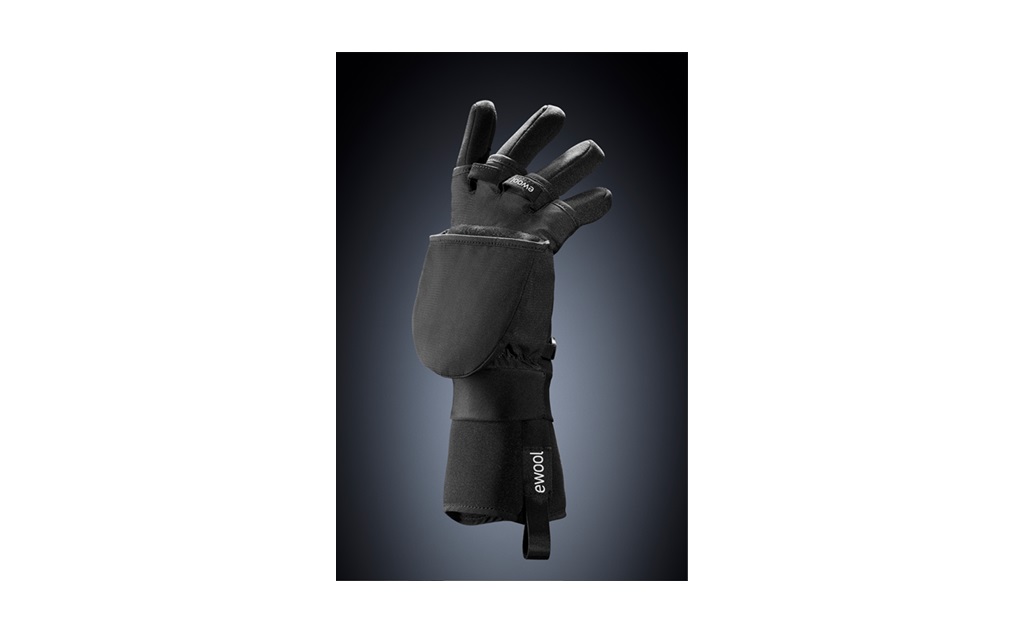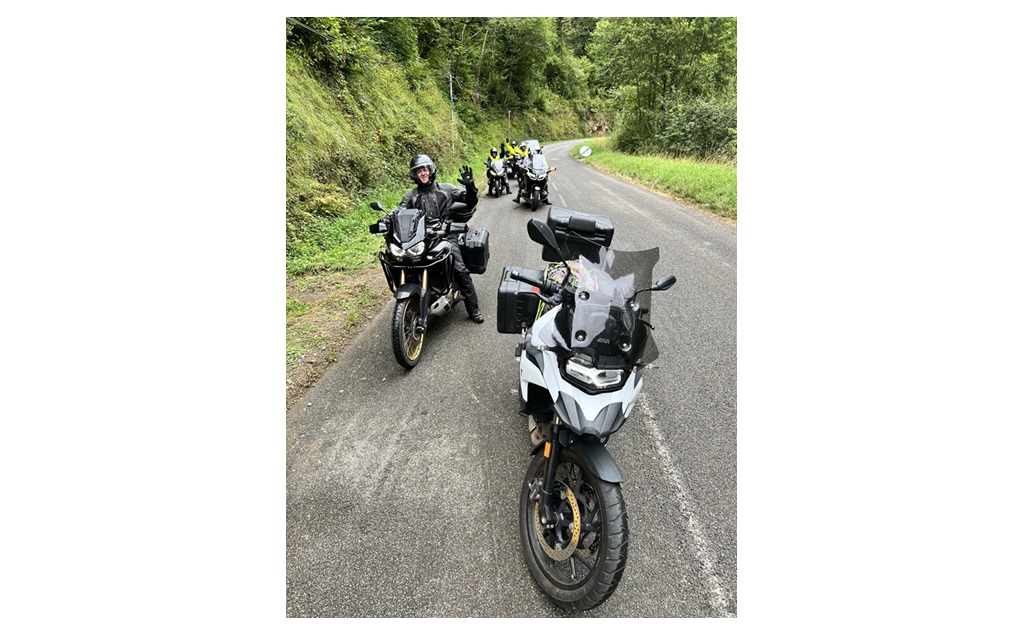Motorcycle lawyers take a stand for injured riders
April 19, 2005, was a fine day for motorcycling in southwest British Columbia. About 5 o’clock that afternoon, Travis Storgaard, who was 18, living with his parents, and studying to become a paramedic, decided to take a short ride. His mother remembers. “On his way out, he said, ‘I love you,’ and I replied, ‘I love you too, Son. Ride safe.’ His reply was, ‘I always do.’”
On Sept. 27, 2007, the weather in Whistler, B.C., was cooler and darker than on that April day two and a half years before. Catherine Storgaard and her husband Len were at a motorcycling safety conference to talk about their son. “On top of the grief,” she said, “there was guilt. Why did we drop our guard? Why did we let him buy that streetbike?” Travis had been riding dirtbikes for years; the 600 cc sportbike was something new.
A lawyer named Daryl Brown was with Catherine and Len Storgaard in Whistler. He rides a ZX-10 and a “Harley-Davidson chopper thing” that he built, and in a previous life was a motorcycle drag racer. Half a dozen years before the Whistler conference, he had gotten a law degree, quit racing, and started representing people who were hurt, often motorcycle riders.
In his line of work, Brown sees people with serious injuries, broken heads and limbs that are often the result of cars getting in the way of motorcycles. Left-turning drivers, he says, are “ubiquitous,” by far the most common cause of serious collisions between cars and bikes. He also sees riders who were rear-ended, and riders who were clobbered by drivers running red lights or stop signs.
“Motorcycle cases come in all types. Visibility is a big problem. For car drivers, might is right. They see the big objects, they don’t see the small ones.”
Brown thinks rear-end collisions have increased with the advent of phone-texting. He also thinks that the protection offered by riding experience is somewhat limited. “The skilled rider is going to be able to avoid a collision more often than the novice, but at the same time, that skilled rider is not going to be able to avoid every incident. People can turn left in front of you in a flash, at the very last second.” He says making eye contact with a driver is no guarantee that you won’t be hit. “Yes, try to see if he’s looking at you, but at the same time, look at the wheels, are they turned, look at the car, is it moving.”
A familiar range of injuries is caused by these kinds of collisions. “You get a lot of broken ankles, legs, and wrists as guys are catapulted off. Back injuries are very common, and head injuries. Brain injuries are also very, very common.” He says B.C. made a smart move when it outlawed ineffective toy helmets two years ago but in his experience even good full-face helmets can fail to protect soft brain tissue. “It depends on the impact.”
Brown is not alone in thinking that experience doesn’t always confer protection. In southern Ontario, Craig Brown (no relation) is a partner with the firm of Thomson Rogers and frequently represents injured motorcyclists. “I would say mostly they’re pretty experienced motorcyclists. I’m not really seeing riding experience as a major factor (in crashes).” That may be because many of the people he represents are no longer young. “I would say that generally the move is toward the older rider, and many of those riders tend to ride cruising bikes.”
Brown says he often gets cases involving left- turning drivers, and “where you have a car pulling out of a driveway directly into the path of a motorcycle.” He also sees a lot of single vehicle crashes. “They’re hard to blame on somebody else,” he adds without a trace of irony.
Unlike Daryl on the west coast, Craig Brown does not get many cases involving rear-end collisions in Ontario; those he does see tend to be serious. “A fair number of the rear-end collisions happen at relatively low speeds, and you tend not to see the catastrophic injuries at those speeds,” he says, but in November 2011 he represented a rider who was hit from behind at high speed. “My client was a woman who was out riding with her husband, and he pulled out from a T-intersection onto a highway, she pulled out onto the same highway, thinking — and we were able to prove — that she had lots of time to do so, and she was rear-ended by a truck. She was thrown from the motorcycle and she sustained a brain injury.” In that case, he says he was “successful in getting a judgement,” but because of what he claims was jury bias against motorcyclists, he got a smaller award for her than he wanted.
Another Ontario lawyer, Tim Leigh-Bell, says some 25–30 percent of his files involve motorcyclists, and he sees victims of left-turning drivers, drivers who pull onto the roadway suddenly, and single vehicle collisions. In one case, a man who was riding around a curve came upon a car that pulled out from the shoulder in front of him. “He swerves to avoid it, and in doing so hits the outer curb, goes down, and he’s got some significant injuries.” The car driver left the scene, and there were no other witnesses. That left him with few options for going after any significant insurance payment.
Back in the day, things were simple. Somebody drove his car into you, and you sued him. The arrival of “no fault” insurance in Ontario and B.C., and in some other North American jurisdictions, has complicated the suing situation. No-fault insurance takes somewhat different forms in each province, but provides money to people who have been injured in traffic collisions without concern for fault — victims are compensated no matter who caused the crash. That’s why Craig Brown pointed out that many rear-enders, taking place at low speeds, don’t involve lawyers. The victims are not badly injured and are well-covered by the no-fault benefits; they don’t need a lawyer because they’ll get what money their injuries entitle them to without a fight.
Those “no-fault” Accident Benefit payments can come to as much as $1-million, and are for such things as loss of income and medical and rehabilitation expenses. But for more seriously injured victims, there is a second option under “tort” law: the injured person can sue a driver who caused the crash for general damages, which includes pain and suffering, and may get money over and above the no-fault payout. But for that, you need someone to sue. Tim Leigh-Bell’s motorcyclist, left without witnesses and unable to identify the driver who he says caused his crash, is left with only the no-fault payment. But Craig Brown’s client, who was hit from behind by a truck, was able to establish that the truck driver was at least partially responsible for her injuries. That meant that she was able to get more money, through the truck driver’s insurance provider, though not as much as her lawyer hoped for.
That woman faced a problem that often comes up in these kinds of cases: bias against motorcyclists. “One of the frustrations that came into play, I believe, in that case was what’s called ‘jury bias’ against motorcyclists.” Juries, and judges, too, sometimes perceive motorcyclists as irresponsible and careless.
In B.C., Daryl Brown agrees that there is a bias against motorcyclists. It starts with the police and the public, and “flows through to the insurance company sometimes.” A police officer who has never ridden a motorcycle is “more likely to be biased against the motorcycle rider,” he says. That officer’s bias will become part of the accident report. But officers who have ridden are likely to more fairly report a motorcycle collision’s facts, he says. “There’s a great deal of bias out there, and that works its way into the system. The insurance companies will deny liability based on statements that witnesses will give saying the guy was speeding — and then you go out and hire an engineer, and you measure a skid mark and you can prove that this person was not speeding.”
Good engineers can help a lawyer’s case, but a bad engineer can foul it up. Police will study the scene of a serious crash and reconstruct the collision as they understand it. “They’ll boil it down to one or two lines,” says Brown, “like the motorcycle had to be travelling at X as a minimum speed.” An investigative conclusion that claims a motorcyclist was speeding can really hurt a case, and that kind of thing often happens. “I’ve seen that type of statement made,” says Brown. Poorly trained investigators will often misread a skid mark, he says. “Then they give you a picture of an S-shaped skid mark” that they claim was laid down by a motorcycle with brakes fully applied.
Brown says he likes to re-run the math used in police reports, and he frequently finds mistakes. But the training for RCMP reconstruction specialists in B.C. is “very limited,” he says.?
Police reconstruction may not be carried out with any more finesse in Ontario, says Tim Leigh-Bell. “There can be special factors that apply to motorcycles that you have to know about,” he says. “For example, the independent front and rear brakes, if you’re looking at skid marks.” Reconstruction engineers used by Ontario police can vary in their level of expertise, and may often be called on to reconstruct scenes involving anything from a snowmobile to a tractor, so their familiarity with motorcycles can be poor.
Leigh-Bell says he hires an engineer for crash inspection who rides a motorcycle, and that expert’s advice can change a jury’s opinion about fault. “It helps to have the real-life experience, I think.”
Which brings us to the lawyers. All three ride motorcycles: Leigh-Bell has a Buell Ulysses, Daryl Brown has that ZX-10 and the “chopper thing,” and the other Brown, Craig, has a BMW GS and a little ol’ Triumph 500. That’s not necessarily just an amusing fact: a lawyer who understands motorcycling from the inside can sometimes make a more convincing argument in favour of a client. For example, Daryl Brown had a client “where a guy was sitting on a seat. It was a king-and-queen seat, and he’s rear-ended. He’s not rear-ended very hard, but he’s pushed forward. He ends up with a tremendous back problem. It’s not something that you could pick up on X-rays, because a lot of it was soft-tissue. But he had a manual job, he did a lot of lifting, and he wasn’t able to continue doing that. I was able to say to the insurance company that here’s the guy sitting in this seat. The front of the seat comes down in a nice, comfortable position, but the back of it right behind him goes up. So when he was rear-ended, the lower part of his back was held in place as he was propelled forward, but the top part was left to fall backward, it was an acceleration-deceleration whiplash-style injury. I was able to show them how that would have happened, but a normal guy, not familiar with motorcycles, wouldn’t have picked up on that.”
You would not be criticized if you concluded from this that lawyers are just insurance agents with more expensive shoes, but modern auto and injury insurance is a very complicated affair. It’s sometimes possible, for instance, to collect money off your car’s insurance policy after you’ve been hurt in a motorcycle crash. These lawyers recommend talking very carefully with your insurance agent before you insure your bike, and buying more insurance than you think you might need. As one said, you take some college kid for a ride, you crash and break him, and it turns out he was in law school or medical school, you could be on the hook for millions of dollars in lost future income.
You might also be forgiven for thinking of lawyers as ambulance-chasers, hearing gold in the sound of passing sirens. But trying a case can cost a lawyer hundreds of thousands of dollars, and when he works for a part of the eventual award, regaining that investment depends on winning the case. “The reality is that the cases that you try in front of a jury are usually your tough cases, and you don’t win, even the best lawyers don’t win every case,” says Craig Brown. “And when you lose those cases, and you have a deserving client — and you become very close to these people, who often become friends, because you’re sharing a very difficult and stressful situation with them — at the end when it doesn’t turn out well, it’s very difficult to cope with. It hurts in every way, emotionally, psychologically, and financially.”
On the other hand, when you win, it feels good, says Leigh-Bell. “When you know you’ve made a real difference in somebody’s life, it does feel good. I’ll run into a client that I haven’t seen for a while, and I won the case and it was just another case, but he’ll say ‘You’ve made such a difference in my life. I’m so grateful,’ and you think, wow.” It’s not insignificant to win an award for a client who can never work again but from now on will never have to struggle for a buck.
It was not money, but redemption that Len and Catherine Storgaard were looking for in the weeks and, ultimately, years after that day in April 2005. It was a kind of redemption. On that day, 20 minutes after he left home, Travis was riding on a main road in New Westminster, a city near Vancouver. As he drew near an intersection, a car pointed toward him made a sudden left turn.
“The impact,” Len told the audience at Whistler, “was in the right rear door of the car, and then the motorcycle followed the side of the car till it hit the back wheel, and then the motorcycle and rider were thrown over the back end of the car, the motorcycle landing a few metres on the other side of the crosswalk. Unfortunately the rider went into the front of the second car that was there, and then back forward again.”
Police investigated, photographed skid marks, talked to witnesses, concluded that the driver of the car should be charged with a traffic violation. The Crown decided not to do that. Their son was speeding, the Crown said, and charging an old woman with failure to yield would not do any good.
When Len looked at the accident report, he thought that he saw mistakes, so he conducted his own investigation. He measured skid marks, studied the scene, and concluded that the left turn made by the car had cut improperly across lanes, and that his son had not been moving as fast as witnesses claimed. In fact, if he had been speeding, Len said, he would not have hit the car. He got nowhere with it. The Crown rejected his investigation and maintained that it would not charge the driver and that Travis was at least partially responsible for the collision. Not long after the collision, Catherine asked Daryl Brown to work for them. She had seen his ad in a magazine weeks before and, for some unknown reason, kept it. They talked to several lawyers, and Daryl was the first who said he’d try to get them what they needed.
“He was a great kid,” she said a couple of weeks after the eighth anniversary of Travis’s death. Daryl Brown helped them get through what was a difficult and painful ordeal with a Crown counsel that she felt was prejudiced against a kid with a motorcycle. “Basically, we felt like he was treated like a piece of shit, that’s the most honest thing I can say to you.”
Through that frustrating experience, they had Daryl Brown “every step of the way,” Catherine said. “We felt like he was our friend.” And even though he could not win their case and exonerate their son, they were not left alone at a time when they really needed someone on their side, and their son’s.






